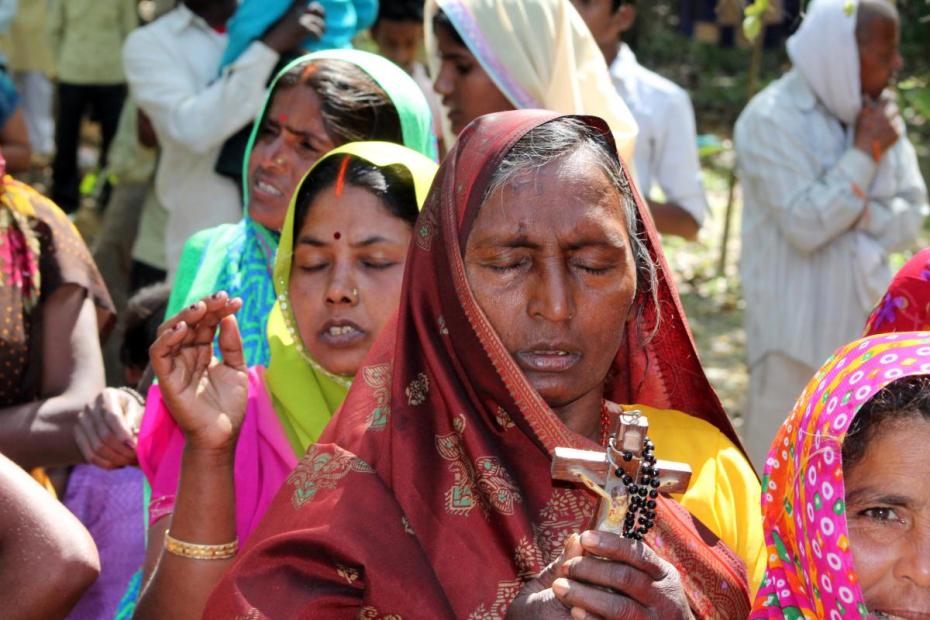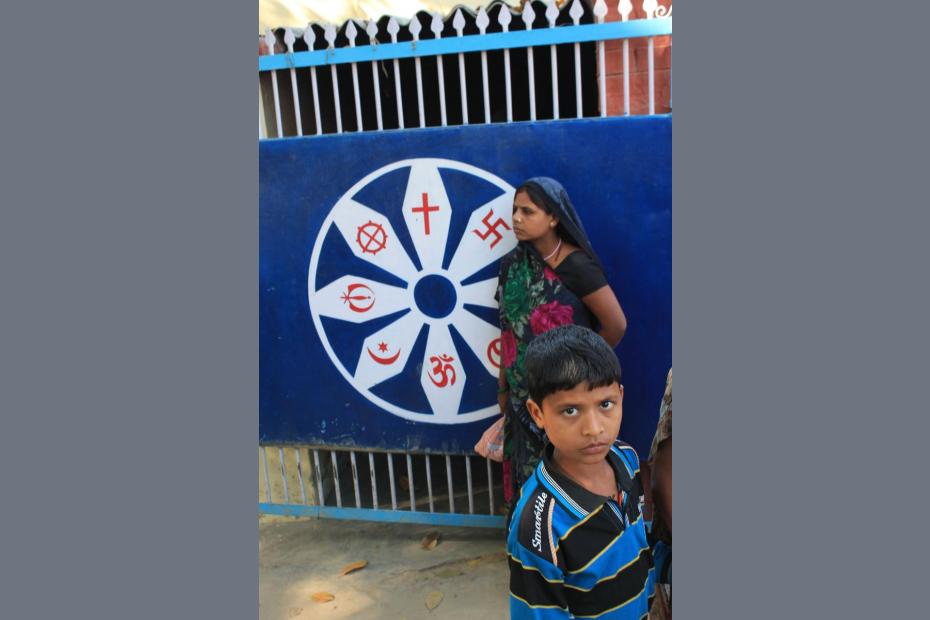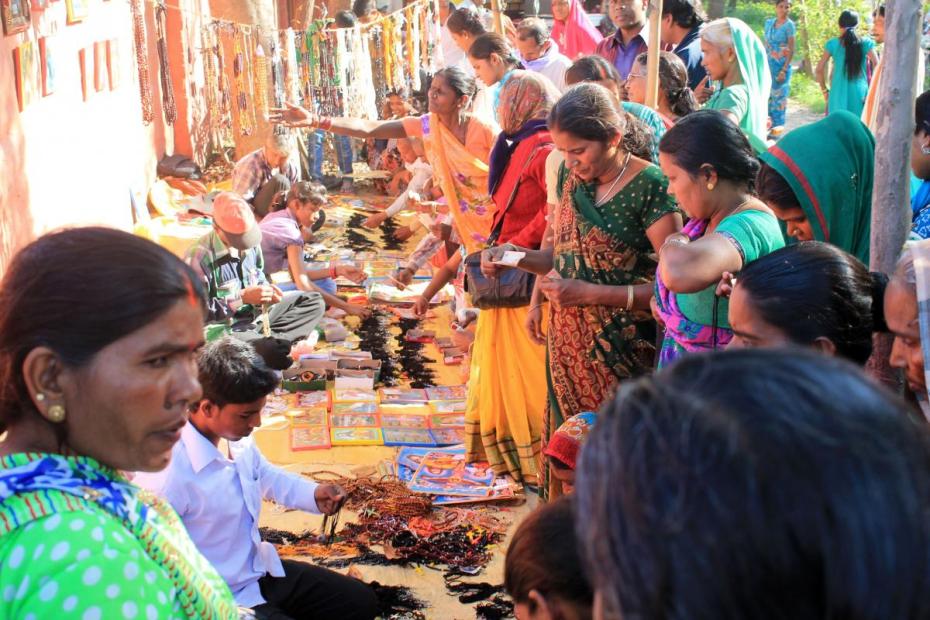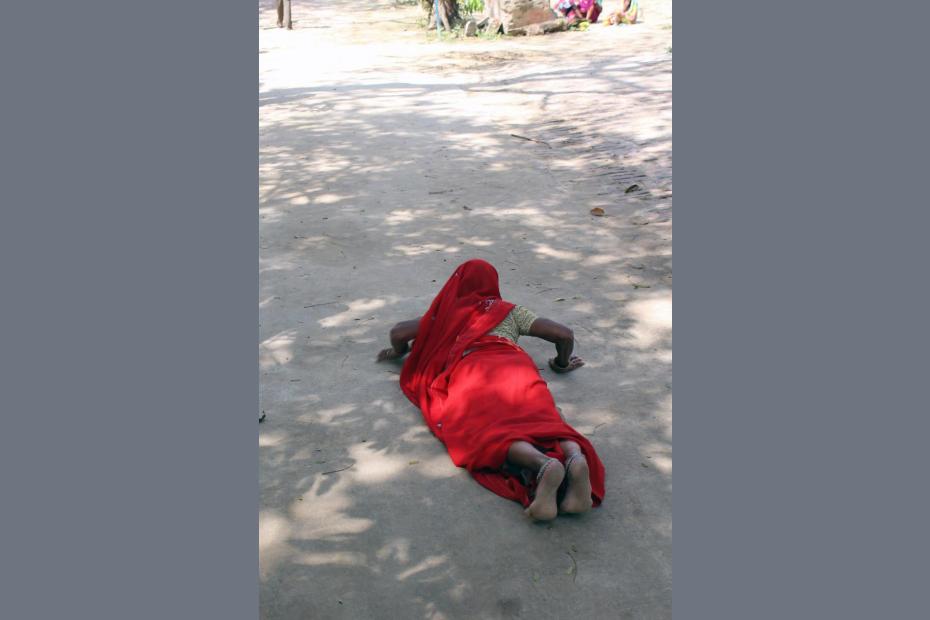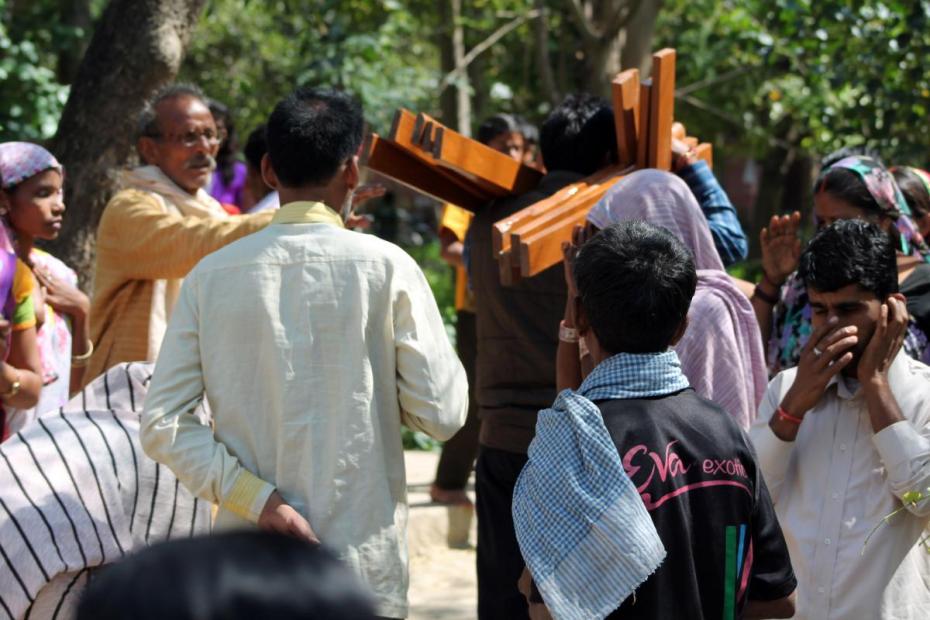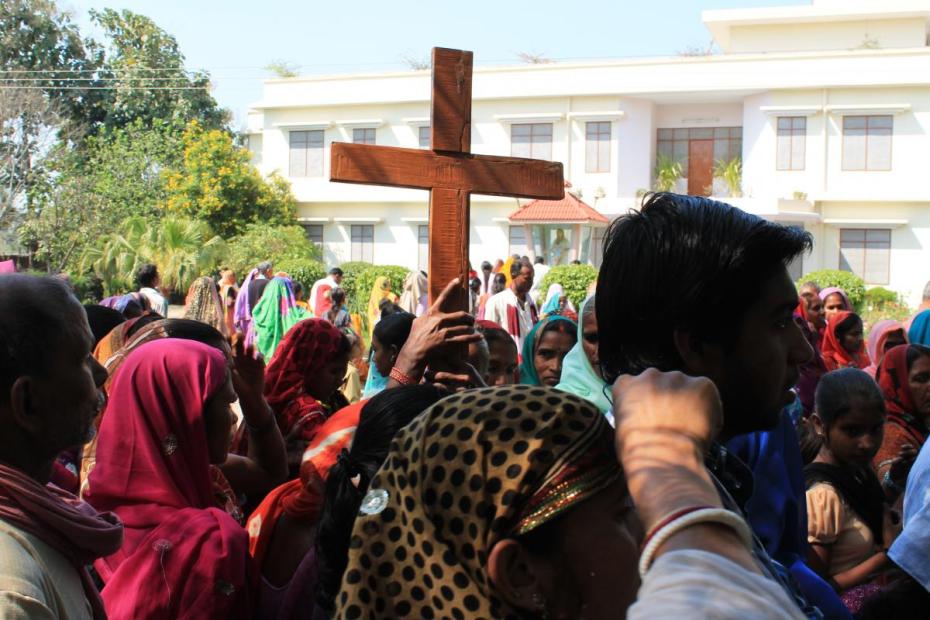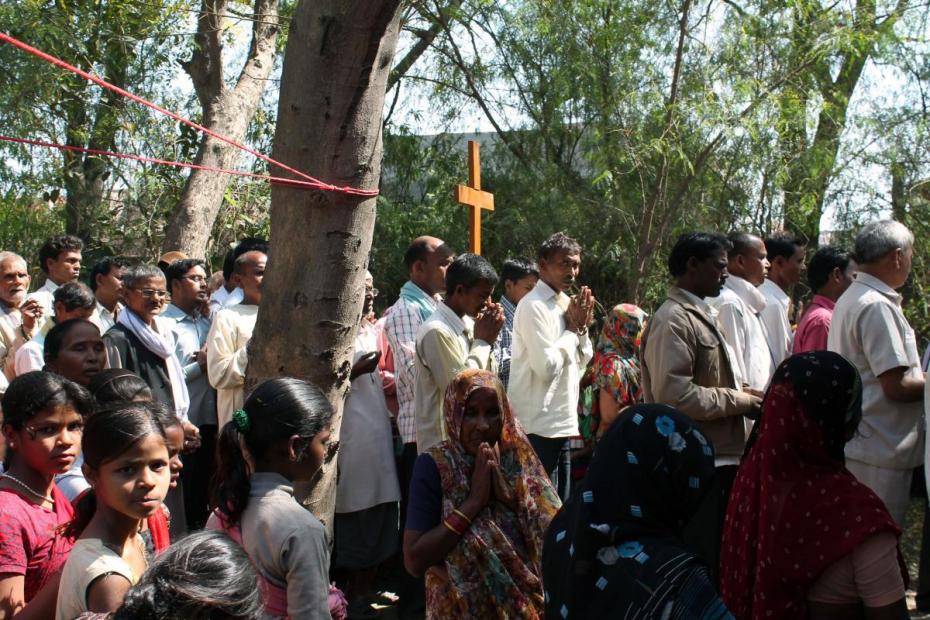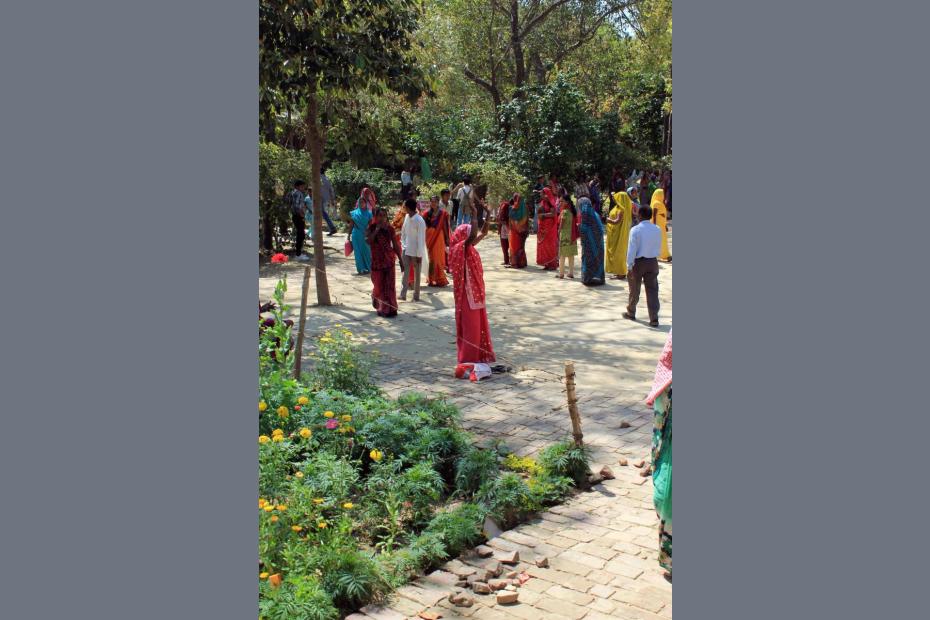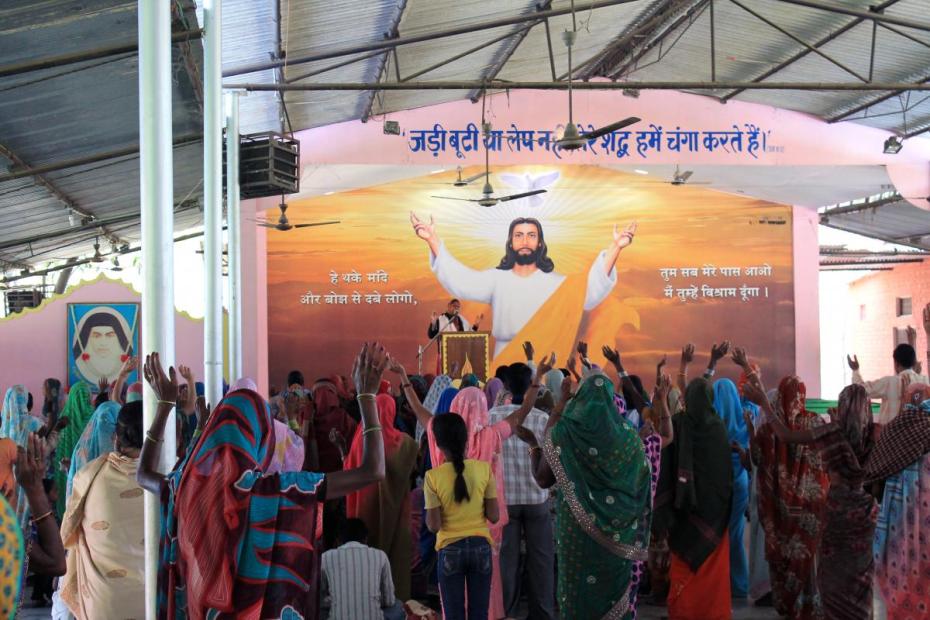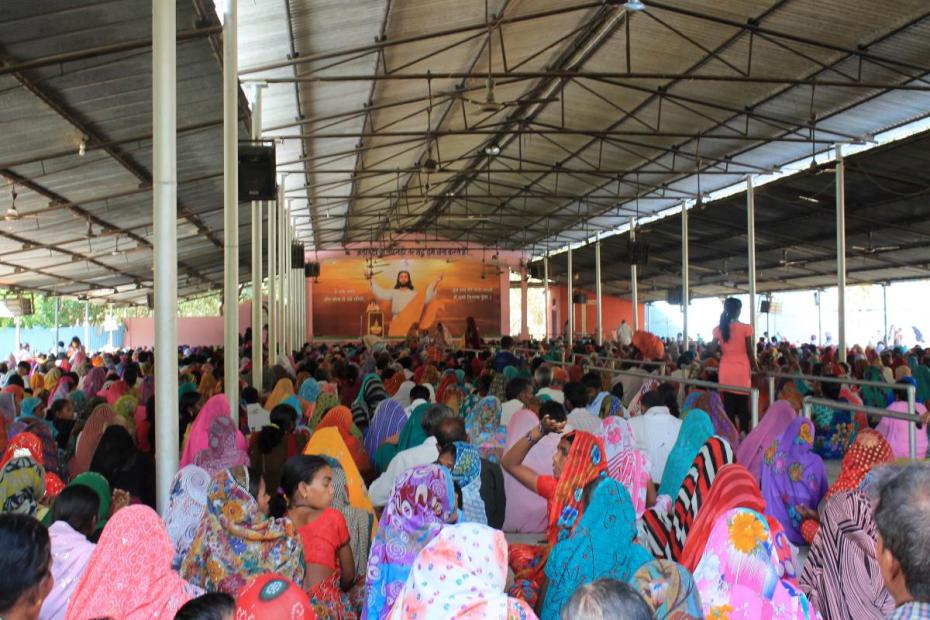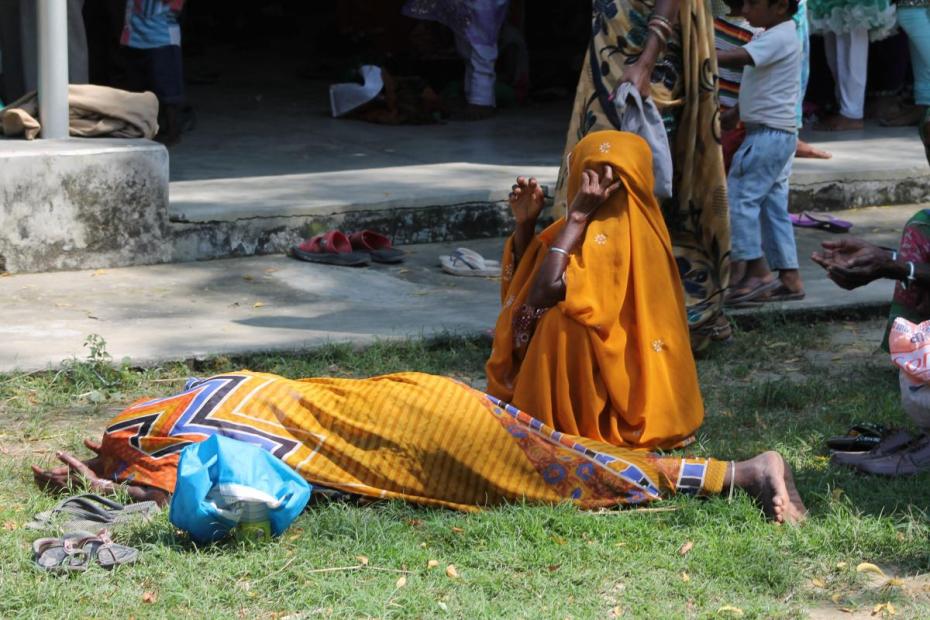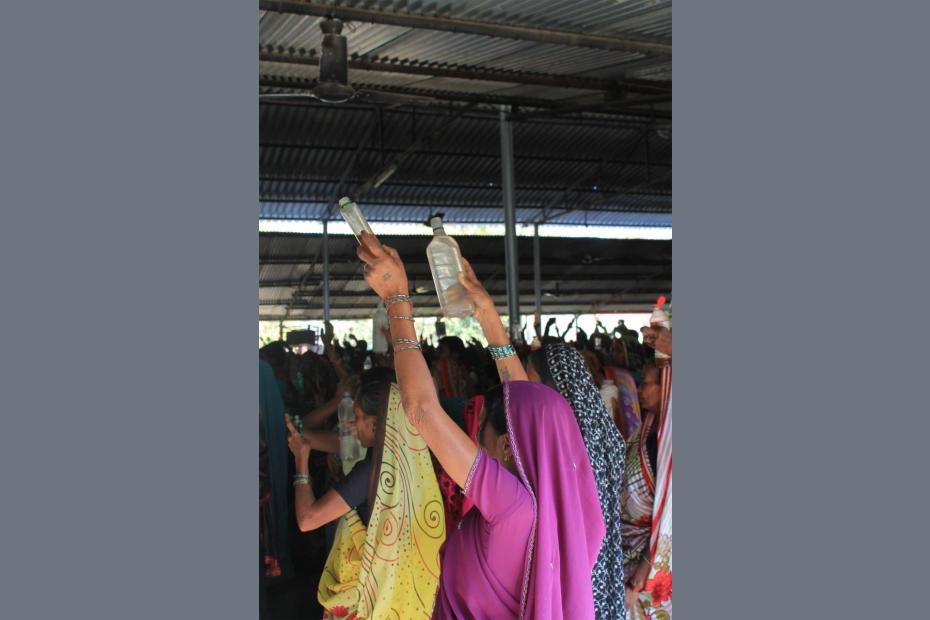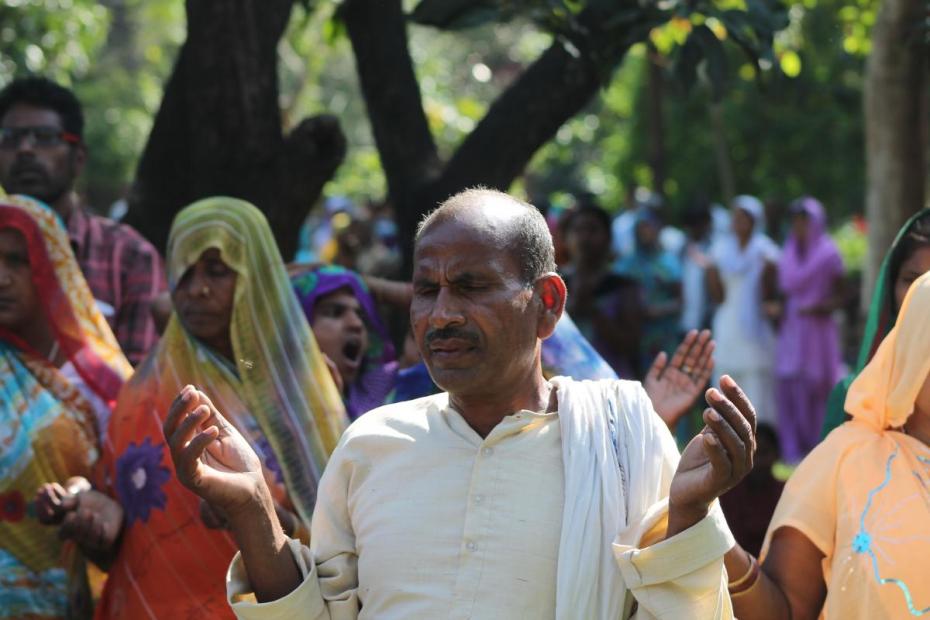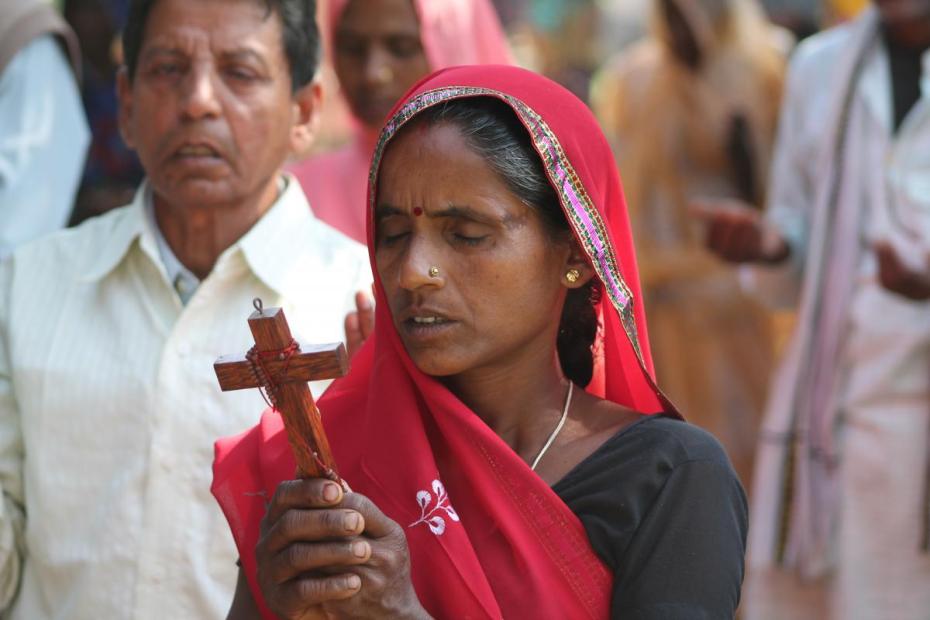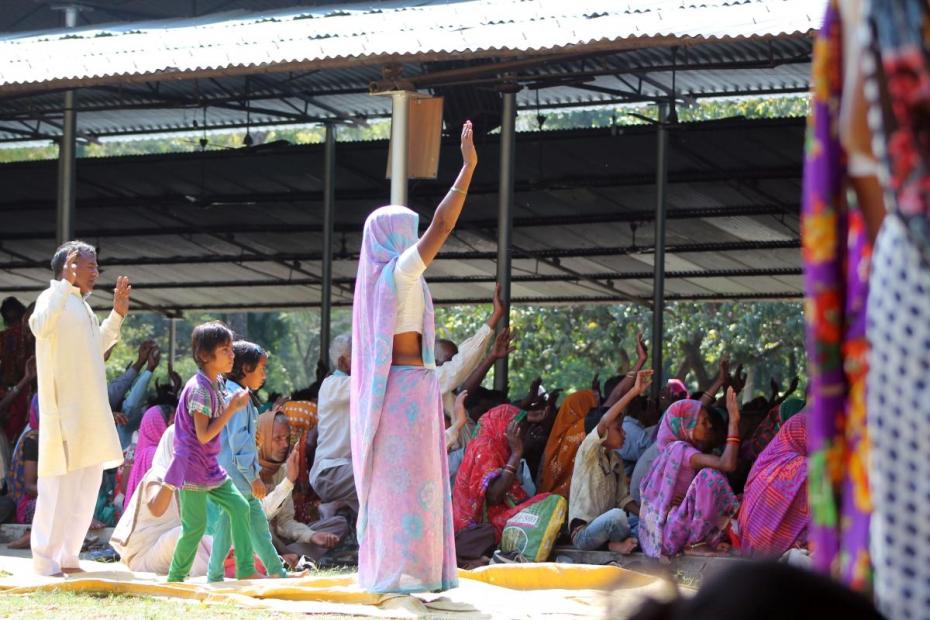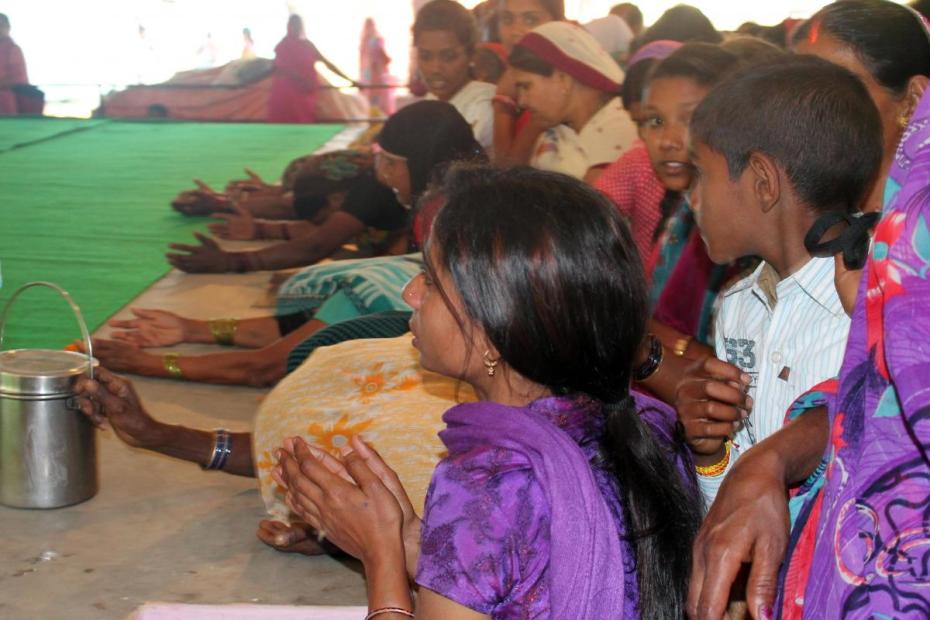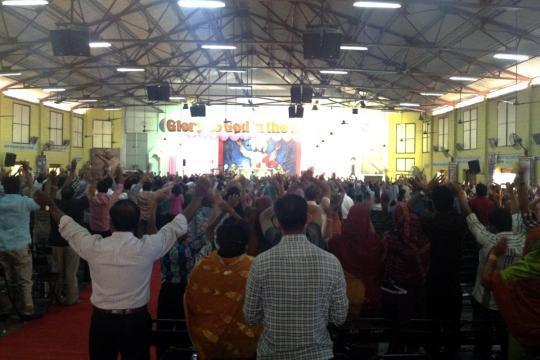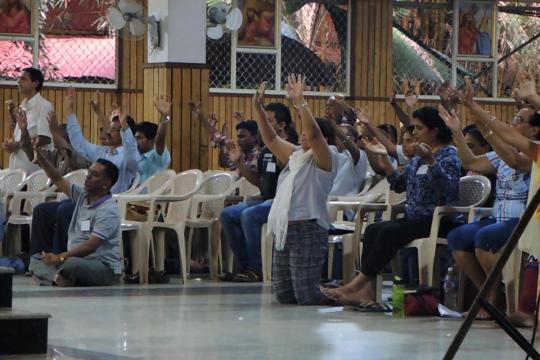Established in 1954, Matridham Ashram was for over thirty years an important Catholic retreat and education center focusing on inculturation or adapting Catholic religious practice to Indian cultural symbols and expectations. While it still holds retreats as part of its “Indian Christian Experience Program,” it is now much more widely known as a center for Catholic charismatic religiosity as well as the Khrist Bhakta movement among Hindu villagers who worship Jesus.
Matridham literally means “abode of the mother” and is situated outside the Hindu holy city of Banaras in India’s most populous state, Uttar Pradesh. The religious order that maintains Matridham, the Indian Missionary Society, is dedicated to cultural and religious outreach particularly in North India where Catholics remain a very small minority. Presently, the head of the ashram is Fr. Anil Dev, IMS, who also has a popular YouTube channel that discusses biblical themes.
Visitors and devotees entering Matridham first pass through a gate—painted blue in honor of Mary—which displays symbols of the major religious traditions of the Indian subcontinent. One of these symbols is the swastika, which is pervasive in Hinduism and taken to be associated with auspiciousness and good fortune. Inside the compound are a number of stalls selling rosaries and candles. A large pavilion is the focal point of activity with lines from Hosea 6:1 written above: “Come let us return to the Lord. It is He who has wounded us and it is He who will heal us.”
Every second Saturday of the month, a full daylong Catholic charismatic healing service is held, which is attended by thousands. The rituals of worship begin outside the pavilion. Matridham’s entire compound is considered to be holy ground; pilgrims will usually walk barefoot, and some will prostrate their bodies to the ground as they move inside. At the beginning of second Saturday services, individual pilgrims will be given crosses to lead a procession that circumambulates—clockwise—around and through Matridham’s entire compound.
The compound itself has small bungalows for retreatants, as well as flocks of peacocks and peahens that make their homes around the numerous banyan and palm trees. As pilgrims make their way, they stop at particular shrines and usually throw coins as offerings.
Led by pilgrims bearing the wooden crosses, people gather under the pavilion for the healing service. There is a large stage over which a fair skinned representation of Jesus presides wearing an orange shawl—a color that is connected with holiness and renunciation in Indic religious traditions. Over the image of Jesus are lines from Wisdom 12:14: “not by ointments and herbs, but by your words we are healed.” Below this, and flanking Jesus, is a passage from Matthew 11:28 in Hindi, which reads: “Come all of you who are weary and heavy burdened, and I will give you rest.”
The service has three interlocking parts, usually separated by Hindi charismatic Catholic songs. The first part is composed of sermons based upon biblical passages. Oftentimes, the sermons will be punctuated by the entire audience chanting phrases in Hindi such as “Praise Jesus” or “Thanks be to God.” Also, the speaker will usually lead the audience in repeating key lines from the text, which are accentuated by the audience responding in unison with statements such as “I know Jesus will heal me.” Along with such devotional utterances, glossolalia, or “speaking in tongues,” can also be heard. The second part is composed of testimonies of healing. The final part is composed of specific prayers for healing and prophecies concerning maladies that have already been healed during the service. So, for example, a priest or lay leader will say, “Someone is being healed of cancer” or “Someone who is having financial trouble should not worry.”
During final prayers for healing, many devotees will hold up water bottles to be blessed. The prayerful postures of pilgrims suggest openness to divine power, and the water bottles will be taken home with the water used in various personal or village centered healing rituals. Some participants will prostrate themselves in prayer as a sign of total submission to God. Many members of the audience will also proceed to the stage to offer financial gifts and pray for healing.
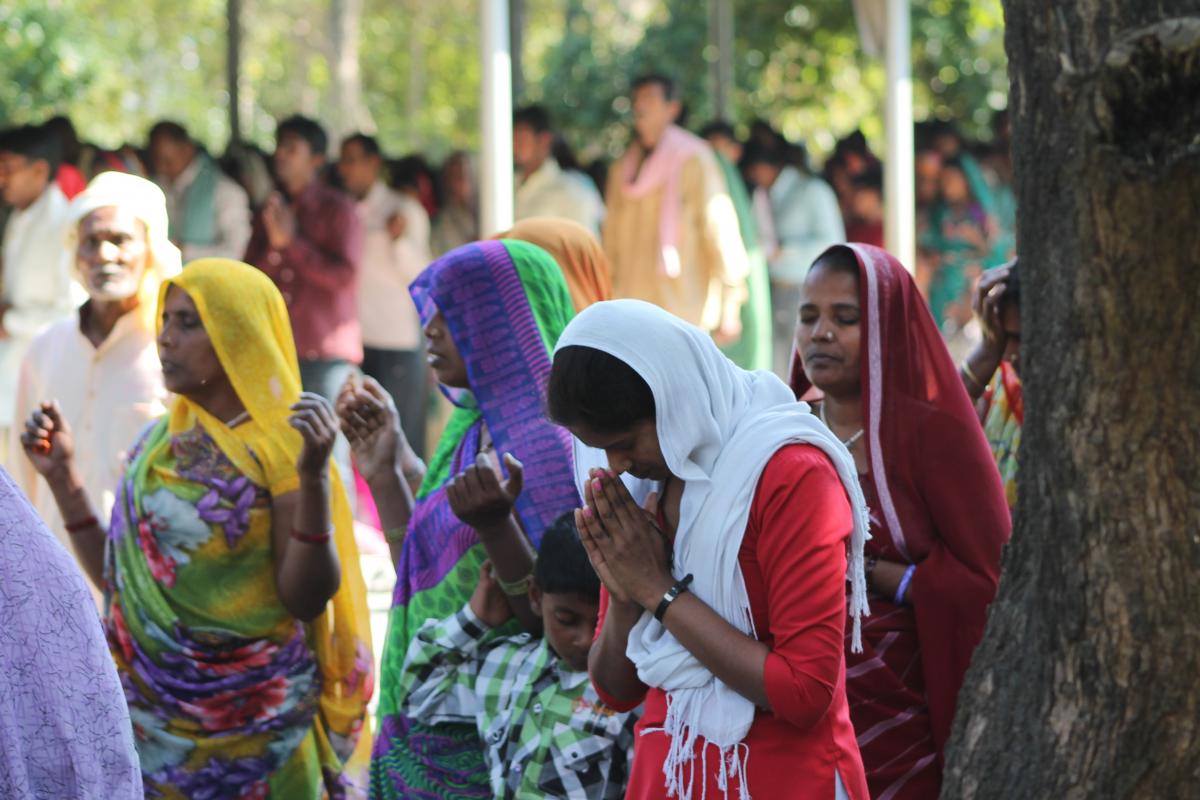
Read more from Mathew N. Schmalz
“Materialities of Jesus in North India,” in Sacred Matters: Material Religion in South Asian Traditions, eds. Tracy Pitchman and Corinne G. Dempsey (Albany: SUNY Press 2015), 67-88.
“Christianity: Culture, Identity, and Agency,” in A Companion to the Anthropology of India, ed. Isabel Clark-Deces (London: Wiley Blackwell, 2015), 277-294.
“Boundaries and Appropriations in North Indian Charismatic Catholicism,” in Engaging South Asian Religions: Boundaries, Appropriations and Resistances, eds. Mathew N. Schmalz and Peter Gottschalk (Albany: SUNY Press, 2011), 85-112.
“The Broken Mirror: John Masih’s Journey from Isai to Dalit,” in Margins of Faith: Dalit and Tribal Christianity in India, eds. Rowena Robinson and Joseph Marianus Kujur (Delhi: Sage Publications 2010), 185-210.
“A Catholic Charismatic Healer at Play in North India,” in Sacred Play: Ritual Levity and Humor in South Asian Religions, eds. Selva J. Raj and Corinne G. Dempsey (Albany: SUNY Press, 2010), 185-204.
“Ad Experimentum: Theology, Anthropology and the Paradoxes of Indian Catholic Inculturation,” in Theology and the Social Sciences, ed. Michael Barnes (Maryknoll NY: Orbis Books 2001), 161-180.
“American Catholic, Indian Catholics: Reflections on Religious Identity, Ethnography and the History of Religions,” Method & Theory in the Study of Religion 13 (January 2001): 91-97
